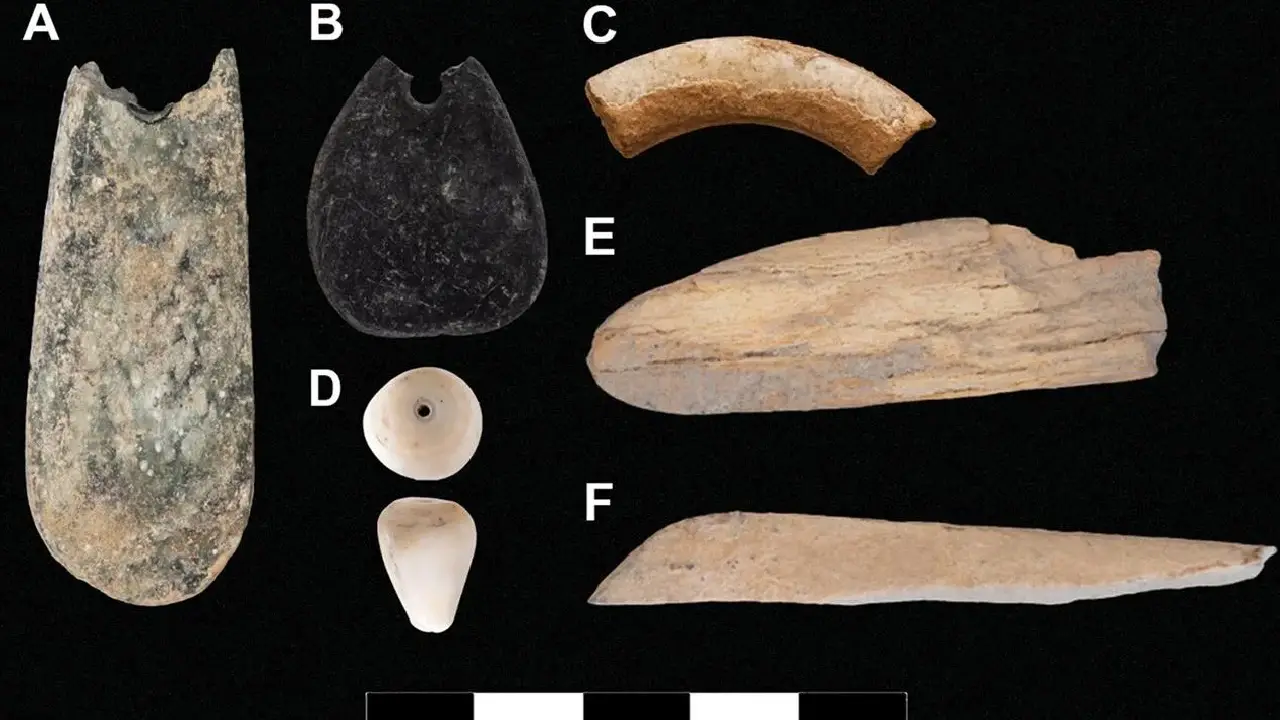Archaeologists in Saudi Arabia have made a groundbreaking discovery: hundreds of 7,000-year-old stone circles that were likely used as homes. This significant find, located in the Harrat ‘Uwayrid lava field near AlUla, sheds new light on the early history of the region.
Aerial surveys revealed approximately 345 of these circular structures, ranging in diameter from 4 to 8 meters. Each circle features remnants of stone walls, at least one entrance, and was likely roofed with stone or organic materials. Jane McMahon, a leading researcher on the project, explained that the circular shape of these structures is consistent with early domestic architecture found globally.

Excavations at the sites uncovered a wealth of artifacts, including basalt stone tools, animal bones, and seashells from the Red Sea. These findings suggest that the communities inhabiting these stone circles engaged in animal domestication, trade, and exchange networks. The presence of seashells, in particular, indicates a connection to coastal regions and potential maritime activities.
The stone circles bear striking similarities to ancient homes excavated in Jordan, reinforcing the belief that they served as residences. This architectural connection suggests possible interactions or population movements between the two regions during the Neolithic period.
The discovery of these stone circles provides valuable insights into the Neolithic era in northwestern Arabia. During this time, the region’s environment was much wetter than it is today, although agriculture had not yet been fully adopted. The inhabitants likely relied on gathering wild plants and manipulating the landscape to support their subsistence.

In addition to the stone circles, another type of structure known as mustatils was also found. Believed to have had a ritual purpose, mustatils are rectangular-shaped structures that may have been used for cattle sacrifices. The coexistence of these two types of structures suggests that they were part of a single cultural entity.
This remarkable discovery offers the first detailed evidence of long-term Neolithic domestic occupation in northwestern Arabia. It demonstrates a scale of Neolithic settlement previously unrecognized in Saudi Arabia and suggests a mixed subsistence economy based on both domesticated animals and wild species.
The similarities in material culture, including tools, decorative elements, and architecture, between the Saudi Arabian and Jordanian stone circles support the idea of interactions or multiple population incursions across the Middle Holocene. However, the local character of the Neolithic process in the region is also emphasized.
This groundbreaking discovery provides a valuable window into the past, offering new insights into the lives and cultures of the early inhabitants of Saudi Arabia. It highlights the region’s rich archaeological heritage and the potential for future discoveries that will further illuminate our understanding of human history.

Leave a Reply